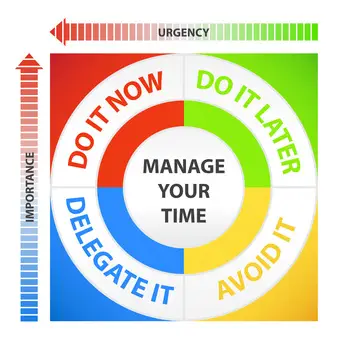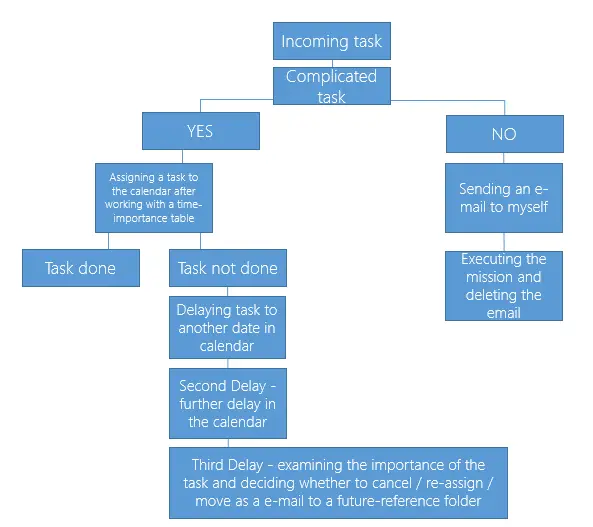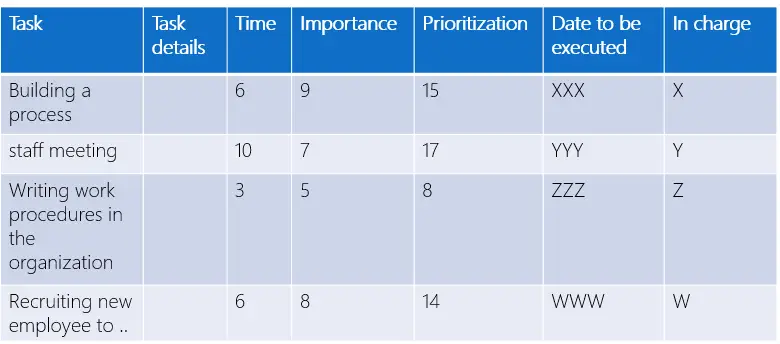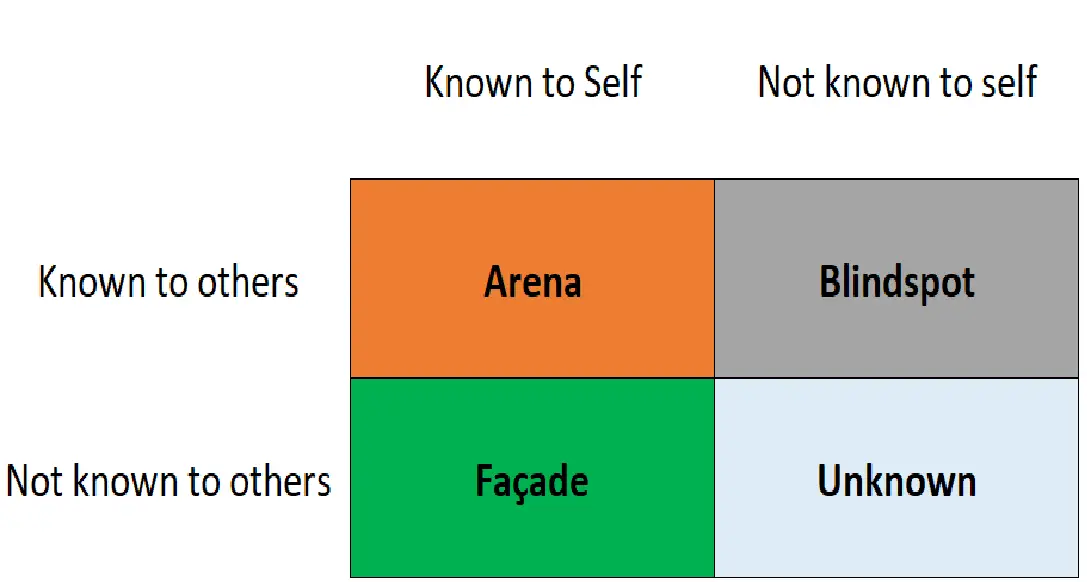A lot of people talk about the equation of time = money and when we "waste" time we actually lose money. I do not rule out this equation but the correct equation to me is time = choice. When you lose time you lose a lot of things that are not necessarily just money



Time management - do more with less time, The Krembo method
What is Krembo? Krembo is an Israeli candy that has a biscuit on the bottom and whipped cream on the top. For me this candy represents us with a chocie - what do we eat first? If we favorite the biscuit we eat it first and leave the cream for later or do we start with what we like less and leave the favorite for later? We have the same choices with our time, and some of us choose to do the things they like first. When we finally have time for the tasks we do not like - we are tired and we either postpone them or perform poorly.
For one business owner, the goal is to work 8 hours a day instead of 12 and spend more time with the family. For another business owner, having the time will make more money. For a physician, having more time will allow most patients to be treated. In this article you will learn about the technique that I have developed for time and task management and can suit anyone.
The "Krambo" method is a task management technique that I have developed and perfected for 10 years. The technique is built another layer, we will talk, with each stage dependent on the previous stage.
Using the method you will:
- Not forget any task
- Keep your calendar tidy
- Perform tasks according to importance and efficiency
- Save valuable time in the way of conduct
- Give better service to your work interfaces and employees
- Increase productivity and profitability
Managing an incoming mission using the "Krambo" method (Procedure attached as 2nd picture):

- Incoming Task - can come as an email, part of a meeting summary, an oral note we received, an idea we thought about, an employee request, a work interface, etc.
- Complicated Task - A setting for a task that takes more than a few minutes and must be closed in the calander for at least 20-30 minutes. An uncomplicated task is a task that usually takes a minute to several minutes. The "Krembo" method also sends an email that takes 30 seconds to complete
- Sending an email to myself - a reminder to keep in mind. In many cases we are reminded of a particular issue or someone asks us for a little thing and we forget. Instead of forgetting, send yourself a short email that takes exactly 10 seconds. For example: "Remember to send a receipt to your uncle"
- Time Table of Importance - The table allows us to efficiently manage and execute tasks according to their true importance to us. I will explain the table later in the article
- Future Reference Mail Folder - In many cases, we accept or produce tasks that are not currently urgent or that appear urgent at a given moment. If we postpone a task several times and decide that we have no time for it soon and that it is less relevant, it is important to keep the detail of the task for the future. We will remove the task from the log, write an email to ourselves with the task detail and forward the email to a future vision folder. If the task is relevant, we can remove it from the folder and re-log it
Important tips for managing time and tasks using the "Krambo" method
Calander management
- The calendar is your most important tool - anything you need to do and takes more than 5 minutes must get into the calendar
- In short tasks (under 5 minutes), send yourself an email, complete the task, and delete the email. If you see that you do not have enough / forget to do the tasks, put in your calendar regular tasks to do small tasks as a reminder. Do the tasks as soon as the reminder is received and delete the email
- Calling someone at a certain hour or doing something at a certain time goes into the calendar as a task, even if it takes a minute
- Since you can hardly see a visual in the log tasks that are embedded per minute, which take at least half an hour, can be written as a task to call several people in the same task
- Enter your calendar every day and end it and check it. The calander must always be full of tasks, so your chores will be complete without wasting time
- If you have delayed a task, always move it in the log, if you have not finished, set another time to complete the task
- Re-meeting - Mark in your calander a recurrence (which is actually a task) so that you do not have to reschedule it every time. Only a specific meeting can always be moved and the task's repetition left. Examples of recurring tasks - Tracking a campaign, weekly work meeting, monthly budget transition, etc. Such tasks can be daily (or several times a day), weekly (or several days a week) and even monthly / yearly
- It is not necessary to accurately calculate how long a logging task will take. It's rare for you to be exact. Always give yourself a little more time than you think. If you finished earlier, move on to the next task. After a few months of using the method you will learn much more accurately in estimating times for each task
- Paste task guidelines into the log detail so you don't have to look for the guidelines every time. Also valid and especially for repetitive tasks
- If we write down in a notebook, many times we forget to read and apply what we wrote down. The solution - a daily reminder in the calander to read from a notebook
- Your calander must always be full of tasks
Mail management
- Syncing your email and calendar to your phone will save you unnecessary tasks. Availability will allow you to work between meetings, travel, etc.
- Manage a variety of folders and subfolders in your email by topic. Topics vary by type of job and job, but there are several folders that most organizations and employees share:
- Recordings - Conversations with customers / employees / suppliers
- price offers
- Invoices and Receipts (Subfolders must be produced with months)
- Links to sites and passwords
- Meeting summaries
- Future refference - Ideas and topics that are not critical at the moment but can be used in the future
- Professional Content - Materials on the Products, Training Content, Conversion Scripts, etc.
- Personal - Unrelated Things (Sub-folders can be created at your discretion)
- Important Documents - Any important document you have received and want to file but no specific folder for that purpose
- Customer Tracking - Customers we have completed treatment with, but we would like to keep the correspondence details with for various reasons
- Delete emails - Your inbox should not contain more than 20 miles in load times. Every email in the inbox is a task. Once you have completed a task, delete or move it to the relevant folder. Don't worry - the emails don't go away, they're always kept in the trash when you delete them. When our mailbox is clean we will respond faster and more efficiently
- Sort emails manually into folders, don't make automatic rules. This way, you make sure that each task is done in a folder or deleted
- Don't make folders by people's names (you can always search by name by email)
- If there are important senders, you can mark them in a special color (preferably no more than 1-2 because it becomes confusing)
-
Don't spend too long on "large" tasks. Divide the task into parts and close a task of no more than 2-3 hours per task
General tips
Write everything digitally. If you wrote in a notebook, we recommend emailing yourself. If it is unwritten and filmed it will take you a long time to find it later. Sample topics:
- Meeting summaries
- Remarks
- requests
- Promises - If you promised something, at that moment send yourself an email with the title of the mission. It takes a second and prevents "forgetting"
- and so forward
- Krembo Method - Anyone who loves the Krembo biscuit eats it in the end. During efficient hours, first of all, do what you like less. At times when we are less concentrated doing what we love, so we can stay focused
- Microwave Exercise - What can you do when you heat food in the microwave? Task integration. If there is a task that requires waiting between action and action, you can prepare a number of small tasks that can be done in advance such as: answering emails, preparing a quote, preparing tasks for the next day, etc.
- If you delay a task more than twice, think whether it is an important task or not and embed it accordingly
- Emails - Different positions receive a different amount of emails of different importance. Sometimes we get an email that takes a second to answer, sometimes a few minutes and sometimes an email that can take half a day and even longer. In this section, I will provide tips that can be incorporated into most situations and roles that will allow you maximum savings and maximum time management:
- Stop checking every email that comes in - when we are performing a task, our attention and concentration are within the same task. Occasionally we will see the Outlook or Email alert on a mail that came in and was tempted to answer the email. Once that is done, we will usually be out of concentration and will need to retrain and remember the task details we performed before responding to the email
- Set a time in your journal where you respond to emails. If your email availability is important - you can set two or three times in a calendar that you dedicate to email (this rule is not valid for people whose email availability must be instantaneous)
- Employees - Each employee "grabs" a certain time slot for their manager. This is how it should be. Each manager should devote a certain amount of time to each employee. The problem is that some employees require a different amount of time according to their personal nature and job requirements. Since the job requirements and nature of the employees are variable, you will find some tips for managing time with employees. Each of the tips should be adapted to your situation:
- Setting boundaries - Sometimes employees "squeeze" you into unnecessary time in personal conversations / things that are irrelevant to the job. It is true that sometimes the employee has problems and we want (and should) provide him with an attentive ear, but it is not possible to regularly have two hours a day of personal conversations about the life of the marriage, the garden, the daycare and the products that the employee has purchased at home. In this case, you don't always have to make a personal call. You can just say they are busy and we will continue the conversation another time. After a number of times most people will understand. If not, have a personal conversation and explain the issue to the employee
- Professional meetings that go beyond the need - In the case where the employee often comes to work meetings when he is not ready or has not drafted the meeting plan correctly, we tend to "burn" a very precious time. Sit down with the employee and teach him how to get ready for meetings and how to formulate his arguments and ideas effectively
How to handle lost time bandits
Customers - There are many different types of customers in the world of time management, but when we want to save time, it is important that we first look at and find those customers who require a lot of time and give little consideration or profit. It is important not to confuse little value with money, although this is true in many cases. Sometimes there are customers who do not pay much, but bring us many other customers, good reputation, connections, etc. Once we identify a customer of this type, we recommend using one of the following methods (adjust according to the situation):
- Set a clear boundary for the client of what is allowed and what is not allowed in the business / employee-customer relationship
- Change of contract - usually for future clients to prevent similar incidents
- Additional tariff collection for "Extra Services"
- Customer Education Experience - For example: Email me this and I'll give you an answer by tomorrow
- Unilateral separation process from the customer (only if it is not profitable at a sufficient level and burns us another income)
Long trips - In many cases we find ourselves on long trips that take us a lot of work time. Here are some things you can do to be effective while traveling:
- If you have a planned trip - leave tasks that can be done along the way. For example, if driving, you can leave a phone call task
- Listening to content - In driving and also on the train you can prepare content for listening in advance such as: sales calls, lectures and trainings that we missed, etc
- Meeting on the road - if you have a planned trip with a colleague / employee. You can schedule a work meeting tailored to the trip
- Traffic jams and parking - For some of us who drive around on the roads, getting there on time and finding parking in some of the big cities in UK,USA, Bulgaria, Serbia Israel etc is a difficult to impossible task. Here are some tips that can help you save much of your time:
- If this is your first appointment of the day, get out very early and get ahead of the traffic. Schedule ahead calander tasks to keep you busy while you sit down with your laptop in a cafe. This will save both traffic jams and you will find parking near the meeting place
- Sometimes our desire to push more and more appointments does not save us time, but on the contrary, wastes us time. Schedule your appointments so that the last one ends before or after the traffic jams begin
- Drive for hours without traffic jams. Do not schedule a meeting in Tel Aviv at 8am (unless you plan to arrive by train)
Providing better service through proper time management by email
- Mail order response - Sometimes a quick and short reply to an email that just arrived will make the other party feel that he is getting excellent service. Anyone who has sent you a long, complex task will not expect an immediate answer
- Identify needs and provide guidance without question marks - Know as much as possible on the recipient and send an email that meets his or her expectations. The more e-mails in his or her "language", the more likely you are to save valuable time on unnecessary correspondence and receive irrelevant answers. Try to keep feelings out of the mail. Want to talk about emotions? For that, there are phone calls and face-to-face calls
- Prevent repeat correspondence by email - Send a neat and detailed email. Think of all the times you sent or received an email that created additional correspondence or unnecessary work due to unclear guidelines or rules
- Avoid mass distribution emails that require a response
- Avoid punctuation, wording, or repetition of words that might be considered hostile, for example: You were supposed to send me this yesterday!
Managing tasks according to Parto 20-80 principle
Many of us spend our time in the wrong and unprofitable places. When there is not enough time, it is important to utilize our time to maximum efficiency and to perform the most productive and profitable tasks. In time management according to the Pareto model, we understand that 20% of the tasks we perform put us in 80% of the benefit or profit and so we must focus on those tasks that bring us the best value. In the next section you will see how to know which tasks we should prioritize.
Managing tasks using time-importance table method (Table attached as 3rd picture)
In case of multi-tasking, it is advisable to prepare a time table of importance. All of your tasks are listed in the table below. Each task has to be rated from 1 to 10 rank - how important the task is to you (1 doesn't matter and 10 is very important) and time - how long an estimated time between 1-10 will take you to complete the task (1-lots of time and 10 little time ). When you add up the amount of importance over time you will get the order to perform your tasks in the "Priority" column. Higher score = higher priority. Once you have received the priority, you can record a date for the execution and the responsibility of the person performing the task. The numbers in the table are for demonstration purposes only.

B + C principle to improve availability and service
When we perform many tasks during the day, we may not have the effect of task management on our employees and work interfaces. The B + C principle allows us to manage an efficient workspace and improve our service in the workspace. For example, let's say we have 3 tasks: A - 5 hours, B - 15 minutes, - 45 minutes. The tasks entered us in the order of the letters, namely the first A, the second B and the third C. The person who asked us for Task A is probably aware that his task is taking a long time and so he would not expect to receive it that day. In contrast, those who asked us for Mission B know that this is not a long task, but he understands that there are more tasks in line. If we decide to perform Task B first, the person receiving the task is likely to be very pleased with the service, as it was very quickly performed to A it would not be noticeable, as he did not expect it and a 15-minute delay was not likely to be felt for it. B + C tasks can be performed before Task A and both B and C will be satisfied with service speed, while for A the gap will be negligible and will receive service at estimated speed.
Summary
Properly managing your time and tasks will help you manage your organization and business more efficiently, more effectively and profitably. The "Krambo" method has been successfully tried in a large number of organizations and businesses, saving tens of thousands of hours of work.





